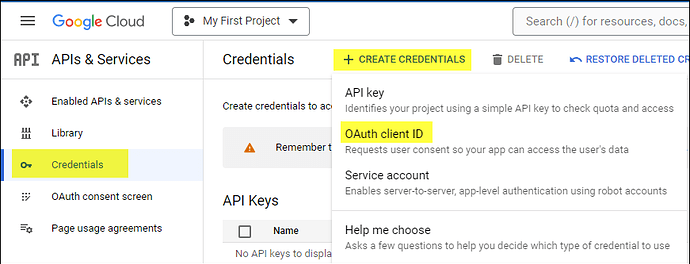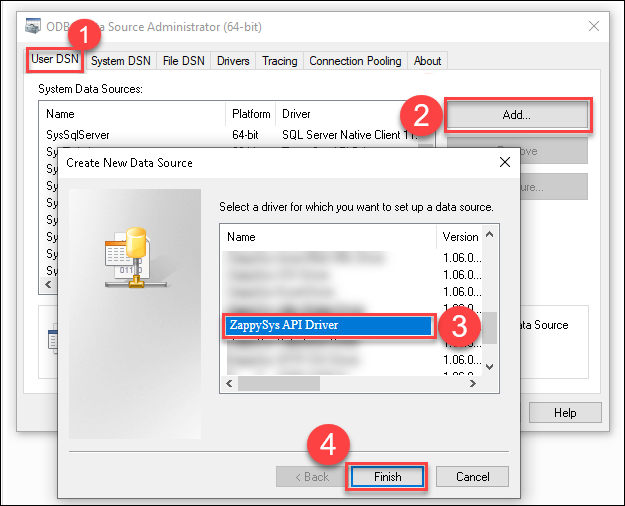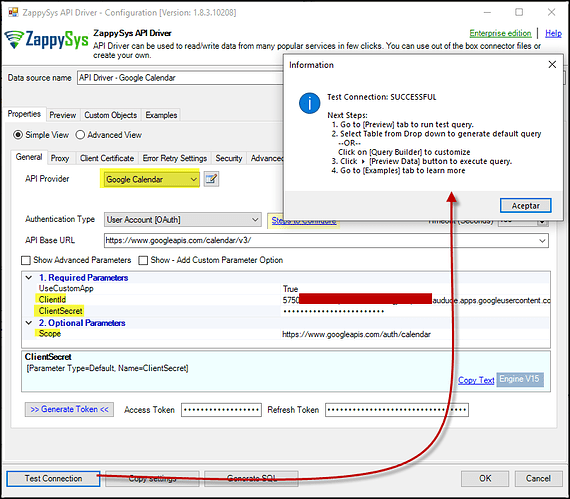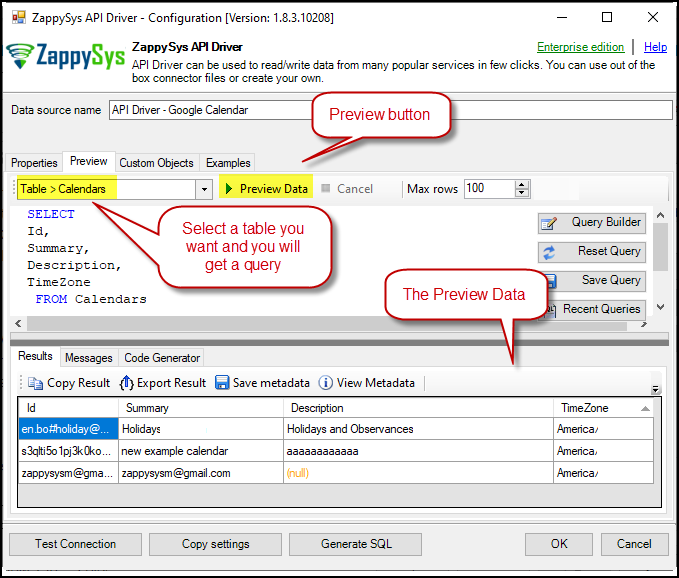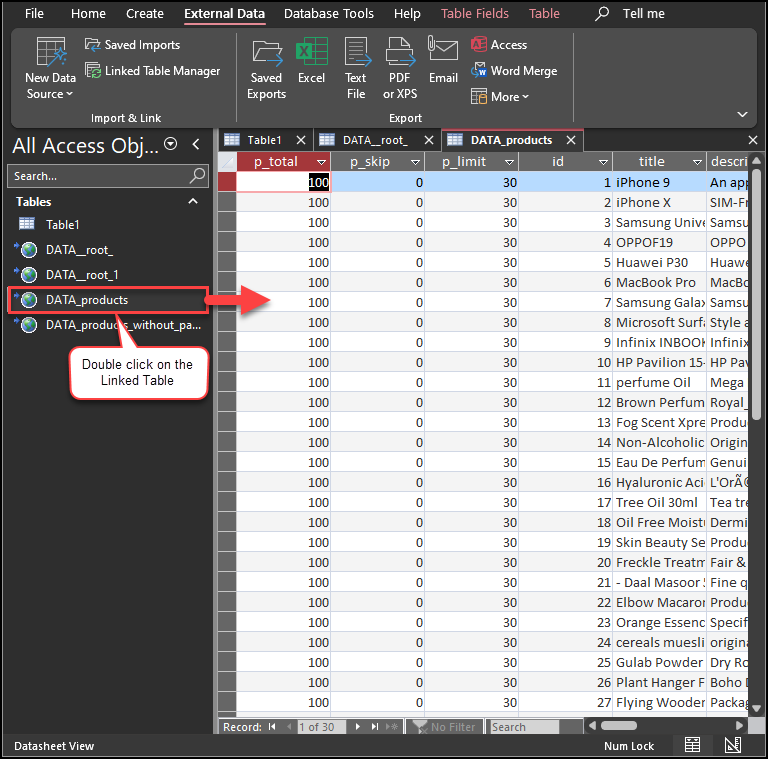Introduction
This article will guide you through connecting Microsoft Access to Google Calendar using the ZappySys ODBC API Driver to retrieve data. The ZappySys SSIS Google Calendar Connector provides a powerful solution for seamlessly integrating your calendar data, making it easy to manage and analyze your Google Calendar information within various applications.
Prerequisites
-
ODBC PowerPack: Download and install the ZappySys ODBC PowerPack from the Customer Download Area or the trial version.
-
Google Account
Steps
Create/Select a Project in the Google API Console
-
Go to the Google API Console.
-
Click on the Project Dropdown at the top bar and either select an existing project or create a new one by clicking CREATE PROJECT.
-
Once the project is set, click ENABLE APIS AND SERVICES.
-
Search for Google Calendar API and enable it by clicking ENABLE.
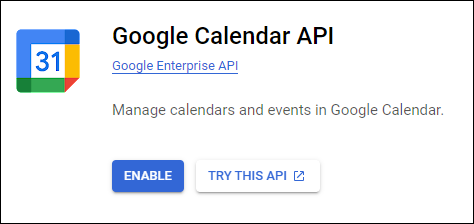
-
Go to the OAuth Consent Screen tab, provide the necessary details, and save.
-
Move to the Credentials tab.
-
Click CREATE CREDENTIALS in the top bar, choose OAuth Client ID, select Desktop App as the Application Type, and click Create to obtain your Client ID and Secret.
Create a New Driver
-
Open the ODBC Data Source by typing “ODBC” in the search box and launching the ODBC Data Source.

-
To gain access for yourself or other users, go to User DSN or System DSN. Go to the System tab for SQL Server Integration and add a new System DSN. Click the Add button.

-
From the driver list, select ZappySys API Driver, then choose Google Calendar from the connector list and press Continue.
Google Calendar Connector Configuration
-
Fill in the connector fields with the Client ID, Client Secret, and the necessary scopes. Then generate the token:
-
Go to the Preview Tab, select a table, and click Preview Data to view the results. Click OK to save the configuration.
Read Data in Microsoft Access
-
Open MS Access and create a new database.
-
Under External Data, create a New Data Source, select Other Sources, and then select ODBC Database.

-
Choose the option Import the source data into a new table in the current database.
-
Navigate to the Machine Data Source, select the data source you created earlier, and click OK.

-
Proceed with selecting tables and views. You can import multiple tables or views.

-
Wait for the data to load. Once complete, you should see a similar view:
Using Linked Tables for Live Data (Slower Performance)
Linked tables in Microsoft Access are essential for online databases as they allow real-time access to centralized data, support scalability, enable collaboration, enhance security, and simplify maintenance tasks. They offer a flexible and efficient way to work with data stored in online databases, promoting cross-platform compatibility and minimizing data duplication.
-
Create a new database. Then, under External Data, create a New Data Source, select Other Sources, and then select ODBC Database. This time, choose the option Link to Data Source by creating a linked table.
-
Navigate to the Machine Data Source, select the data source you created earlier, and click OK.

-
Proceed with selecting tables and views. You can link multiple tables or views.

-
When prompted to select the Unique Key column, DO NOT select any column(s) and click OK.
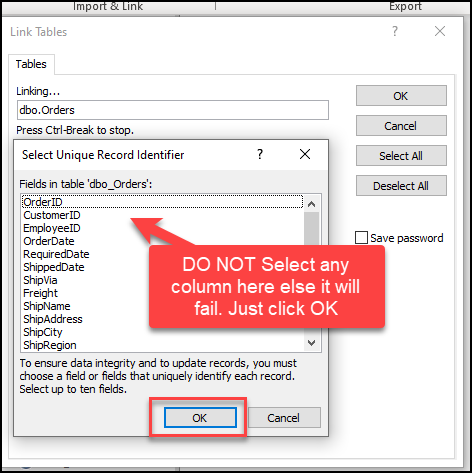
-
Double-click the newly created Linked Table to load the data.
Considerations
Save your authentication details to avoid needing to retrieve them each time you connect.
Video Tutorial
Conclusion
Following these steps, you can easily connect MS Access to Google Calendar using the ZappySys ODBC API Driver, streamlining data integration and retrieval. This powerful tool simplifies the management of your calendar data, allowing for enhanced analysis and reporting. If you encounter any issues or need further assistance, our support team is available via chat on our website.
References
For more detailed information, refer to our ZappySys Google Calendar Connector.

